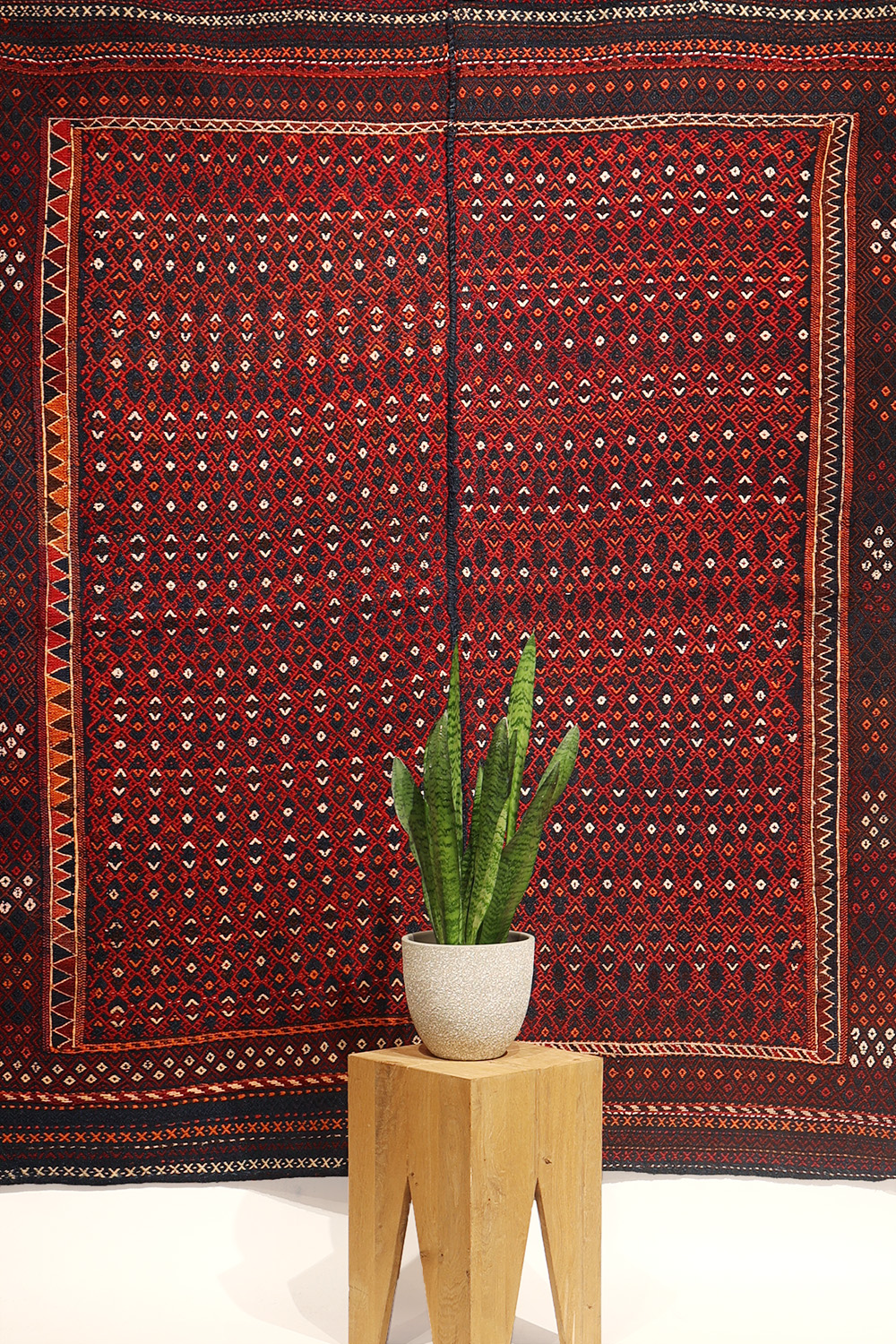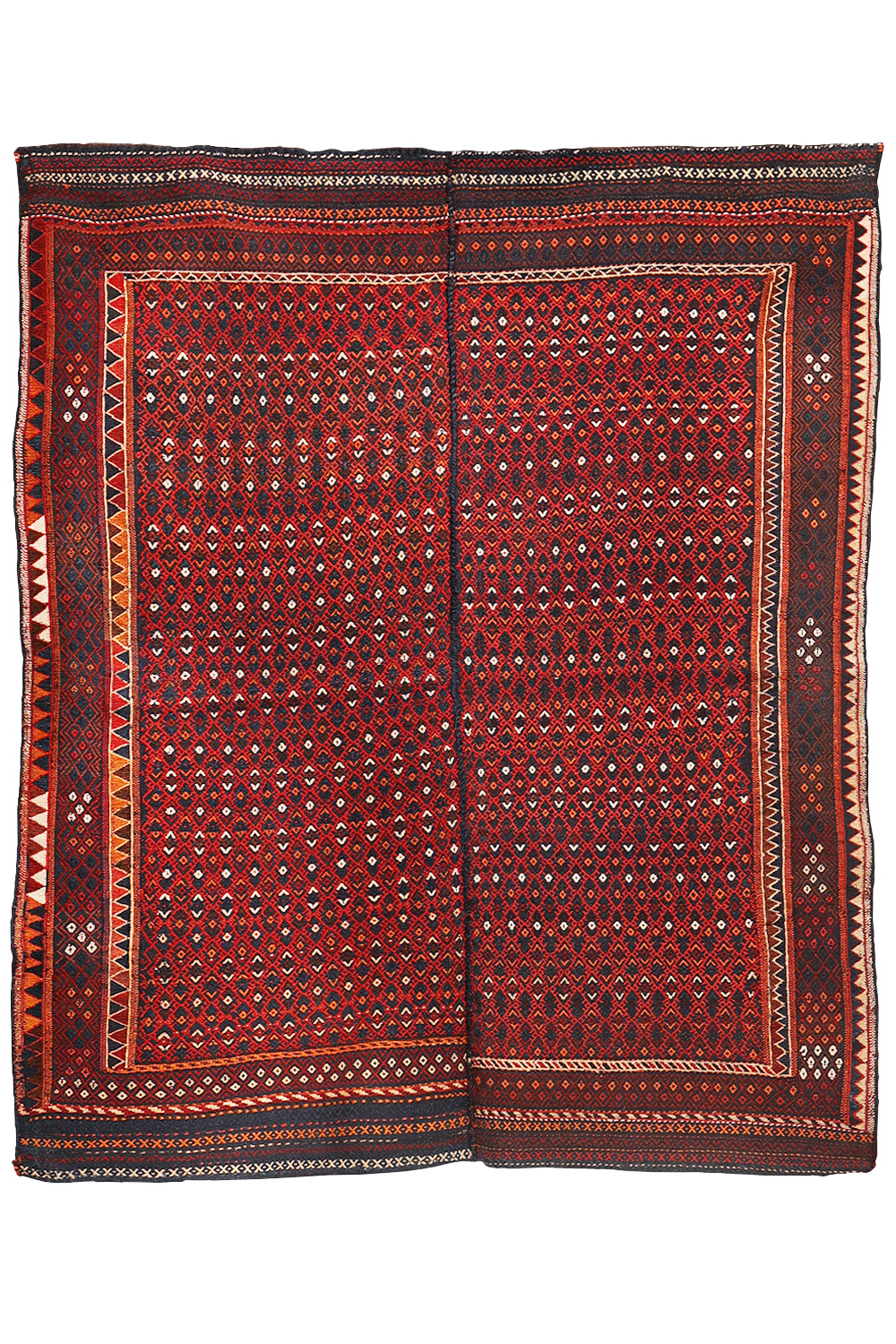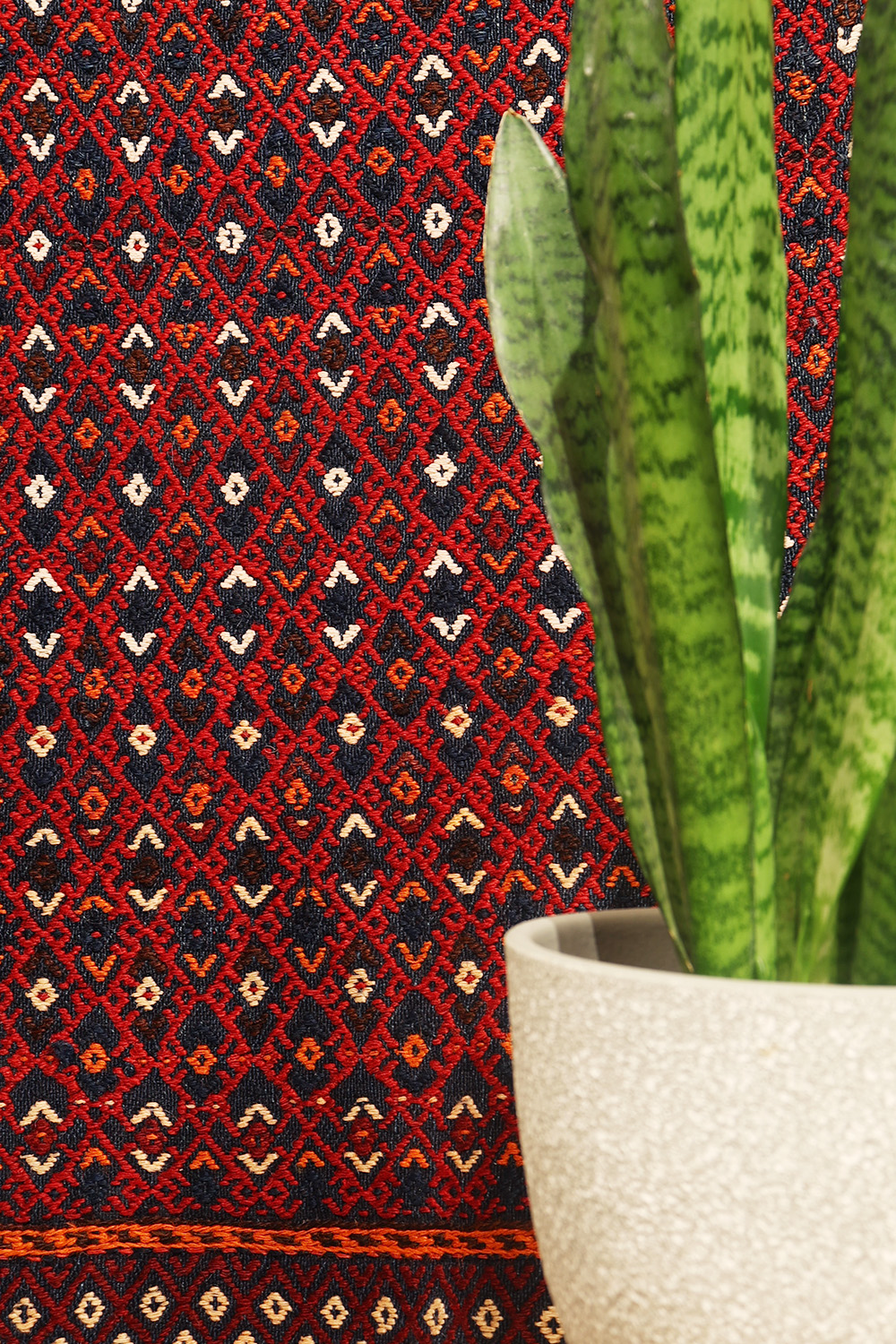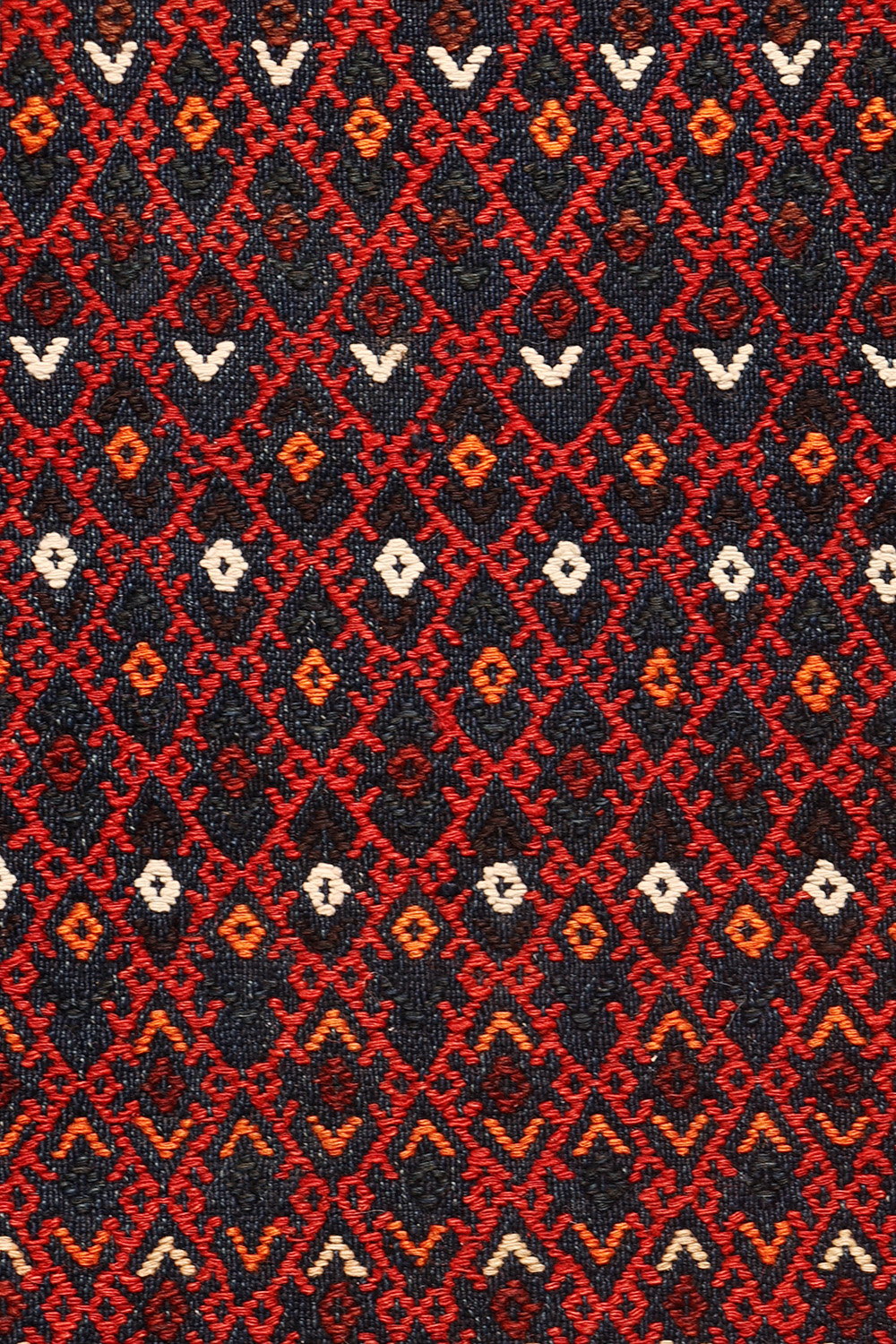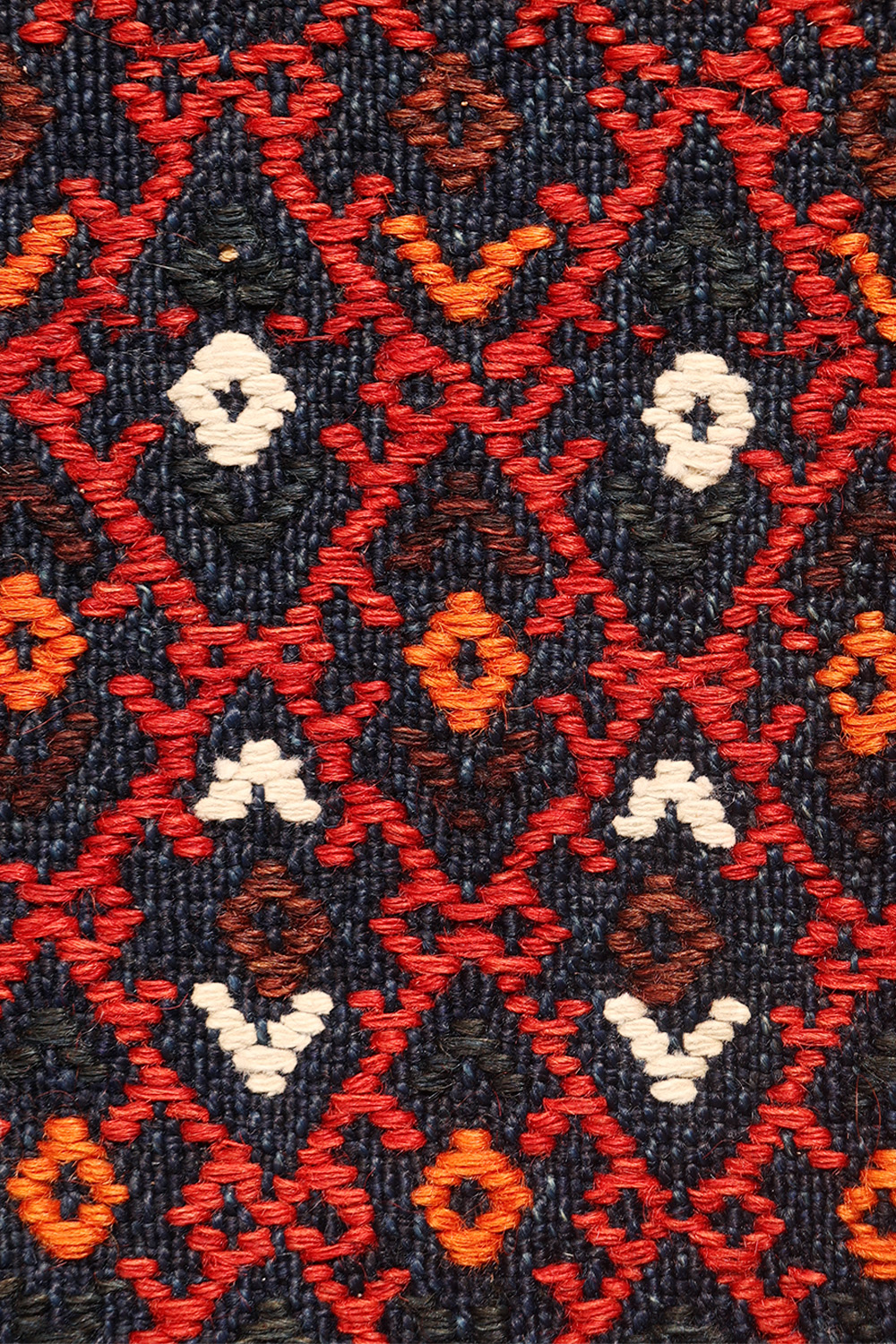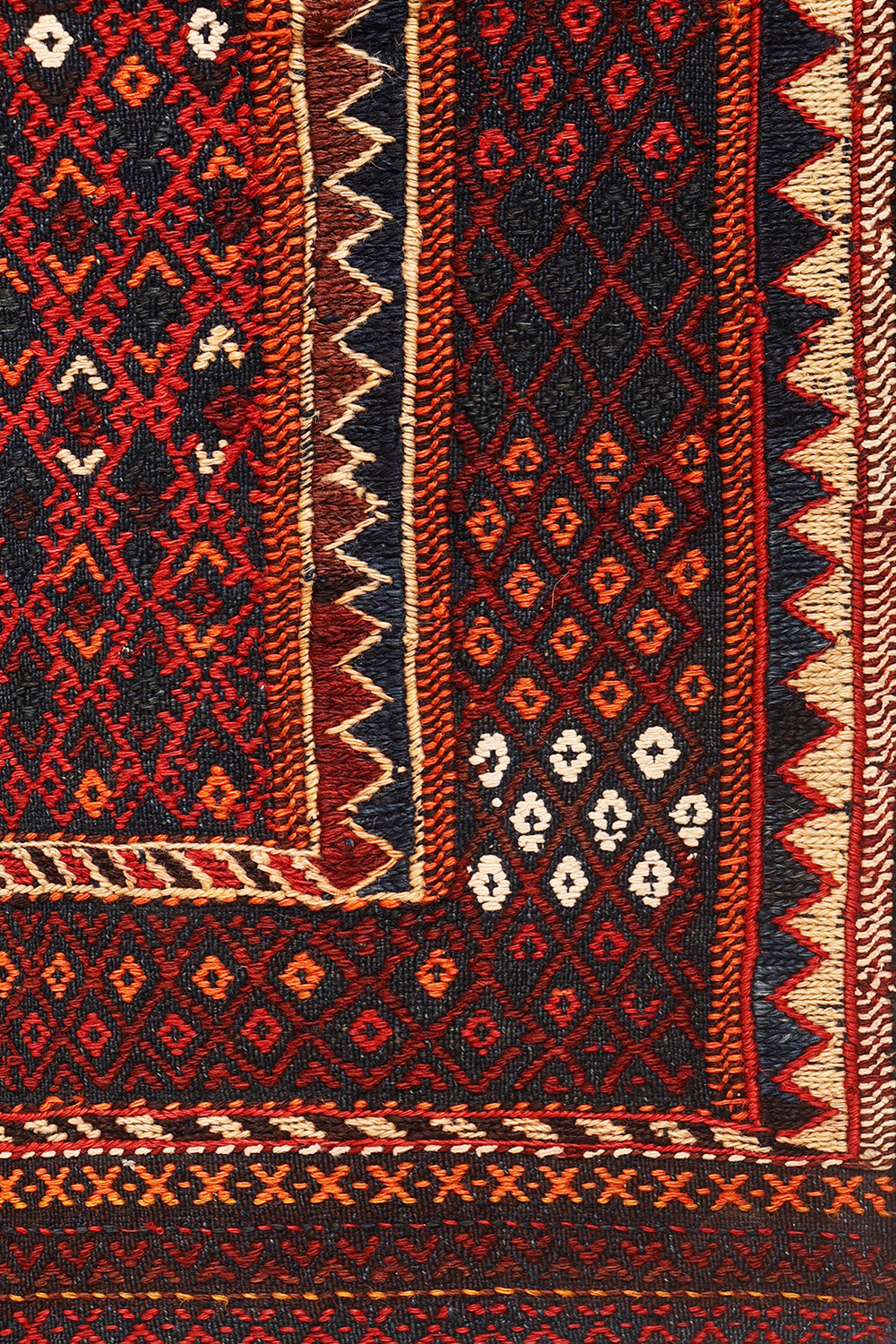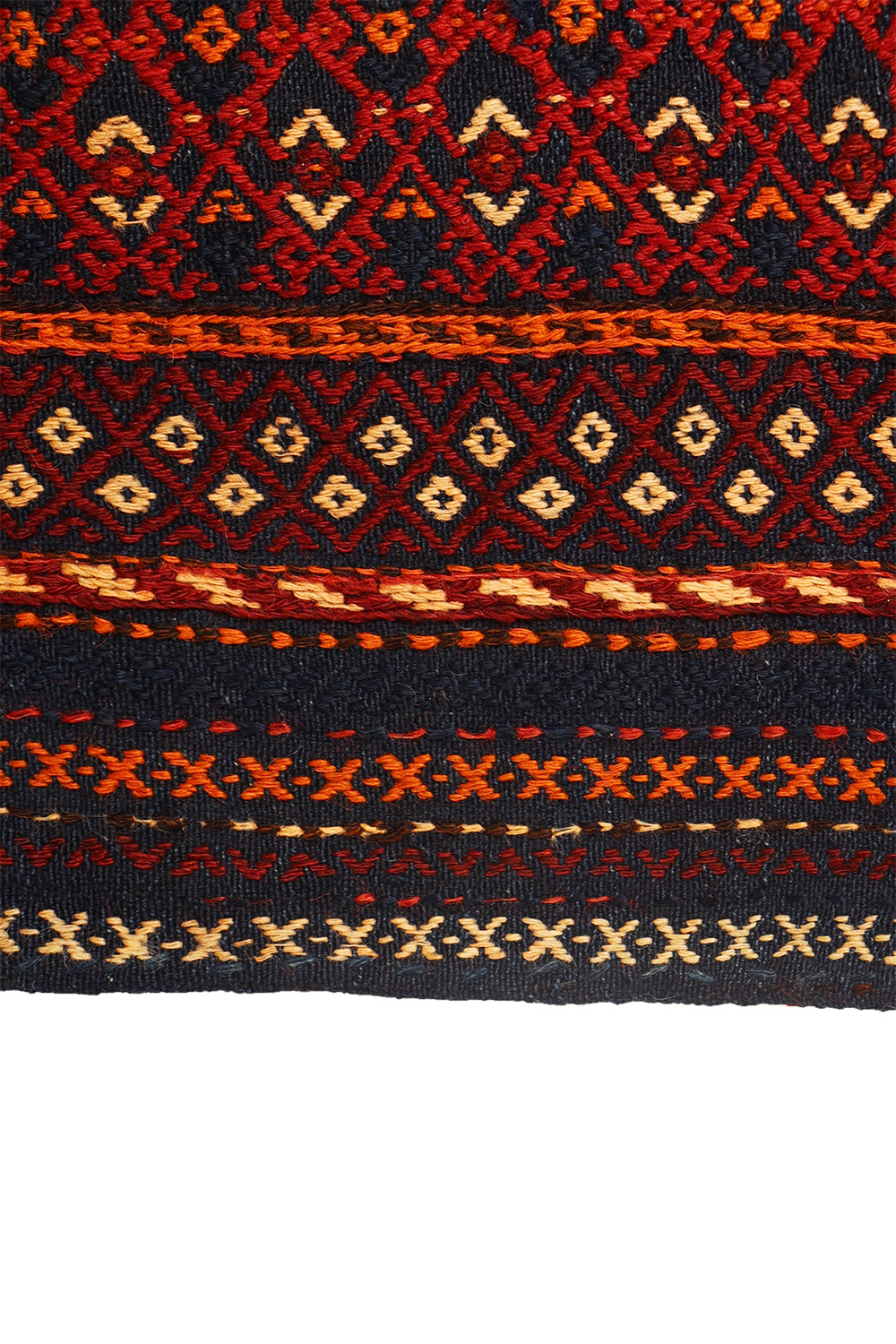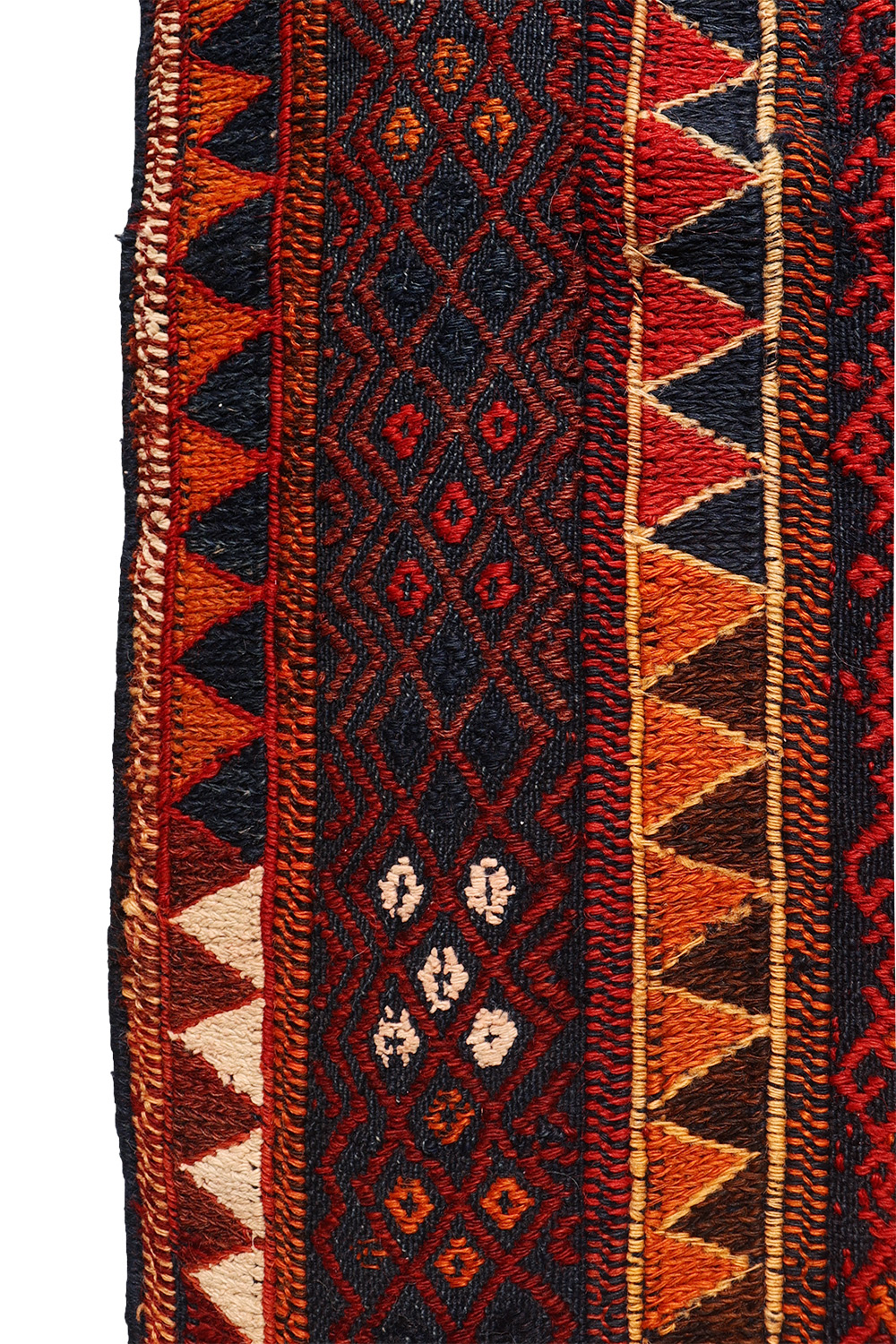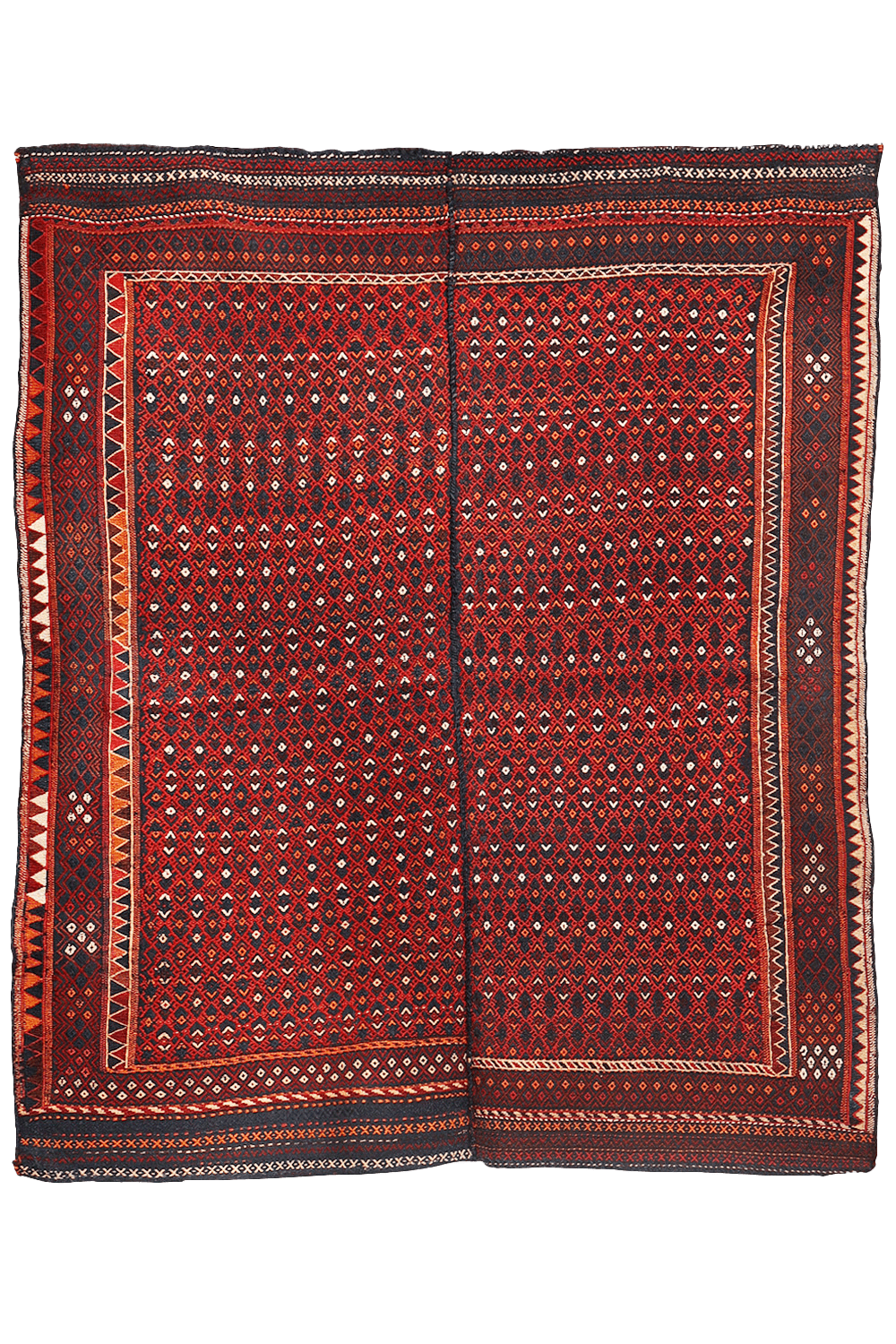1,250.00 €
Antique Shiraki Kilim from Southern Iran
This type of kilim is known locally in southern Iran as a “shiraki”, a word that literally means “needle work” — though, interestingly, it is woven on a loom rather than sewn. Due to the limited size of the looms available to most weavers, shiraki kilims were traditionally woven in two separate panels and then meticulously joined to achieve the desired width. In this particular piece, the two halves exhibit distinct personalities: the left side is more colorful and playful, while the right half leans toward a more refined and subdued elegance.
This antique kilim was woven by an ethnic Arab weaver in southern Iran, carrying the rich textile traditions of the region. The wool used is of outstanding quality — soft, lustrous, and full of life. It remains in perfect condition, a testament to both the craftsmanship and the materials used. All dyes are natural, and the white floral motifs are woven using undyed white cotton, adding delicate contrast and texture to the design.
Material: 100% hand-spun sheep wool
Size: 197×162 cms
Origin: Arab tribe from Iran
Date of weaving: 1920’s
Arab nomads of Fars Province, Iran, are descended from certain Arab tribes of Najd, Yammaneh and Omman who migrated in the 7th and 8th centuries following the Arab contest (640 A.D.) and the advent of Islam. They speak a corruption of Arabic and Persian.
Althoug Arab nomad piled production encompasses a great and astonishing variety of designs, with field patterns much more varied than other tribes of Fars, the Arab weaver´s adherance to a generally dark and sober palette has denied them the artistic recognition they deserve.
1 in stock
Additional information
| Weight | 7.3 kg |
|---|
Subscribe and receive the lastest news
